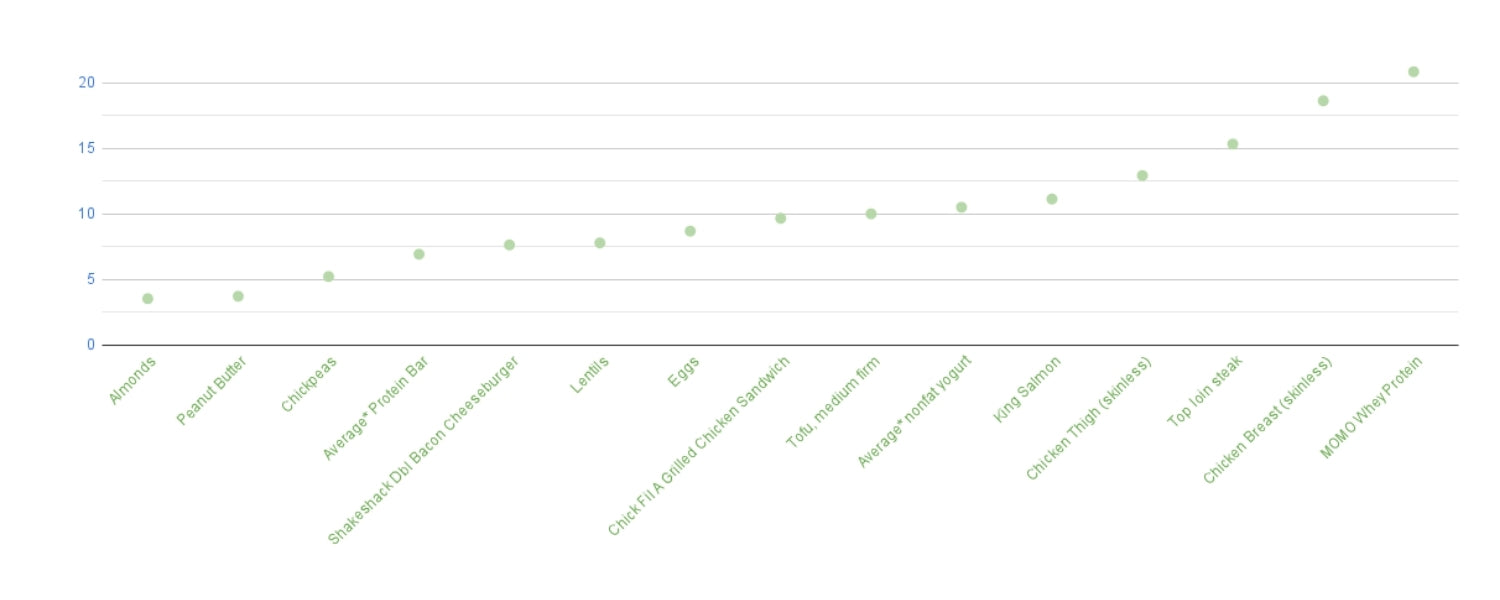the 10 to 20 rule
How I calculate whether a food is low, medium, or high in protein
tl;dr divide protein by calories on the nutrition facts panel and see how close that number is to 20%, the higher the percentage the "better" (but 10% can still be pretty good).
I noticed how so many grocery store brands advertise "high protein" even if it only has an extra gram or two of protein for a ton of calories, so I came up with a way to quickly check if that new product I'm interested in actually has "high protein." It's a quick way I've used consistently to find a frame of reference when comparing different foods over the years.
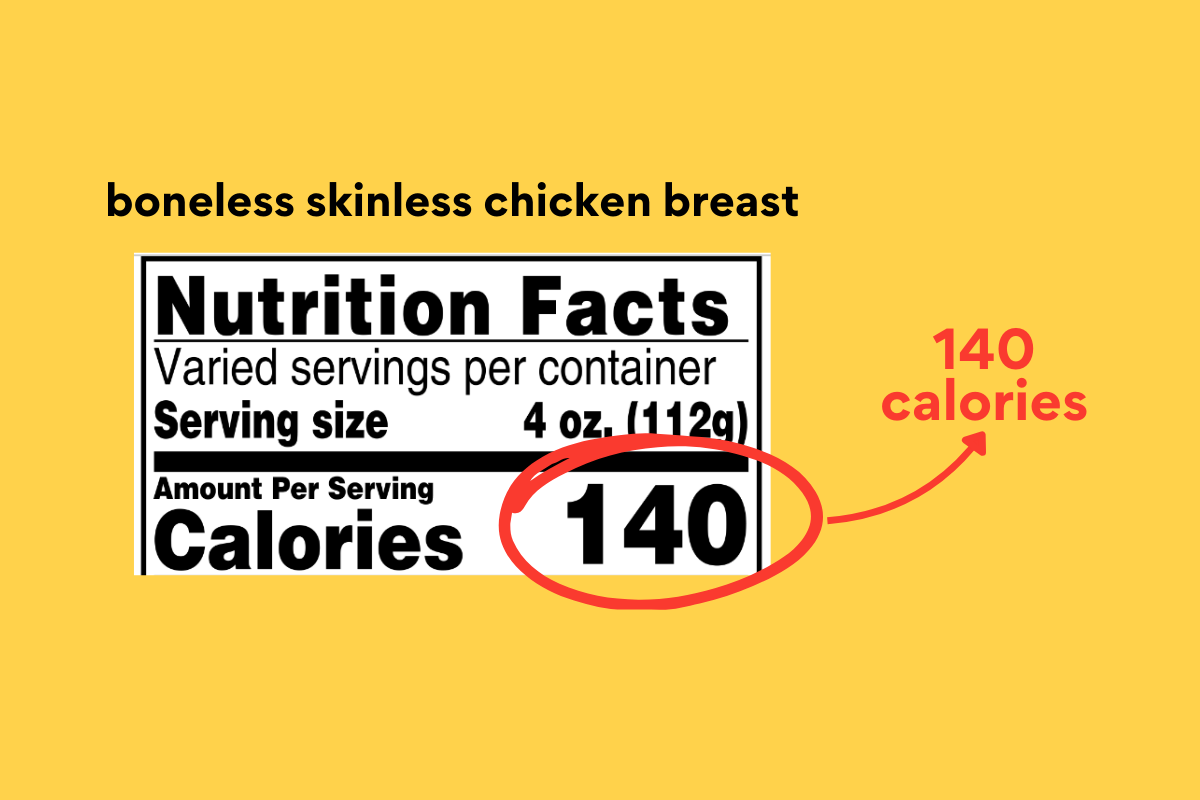
– 01 –
calories
Find the Nutrition Facts and make a mental note of the calories
In this example we use 4oz of boneless skinless chicken breast for 140 calories
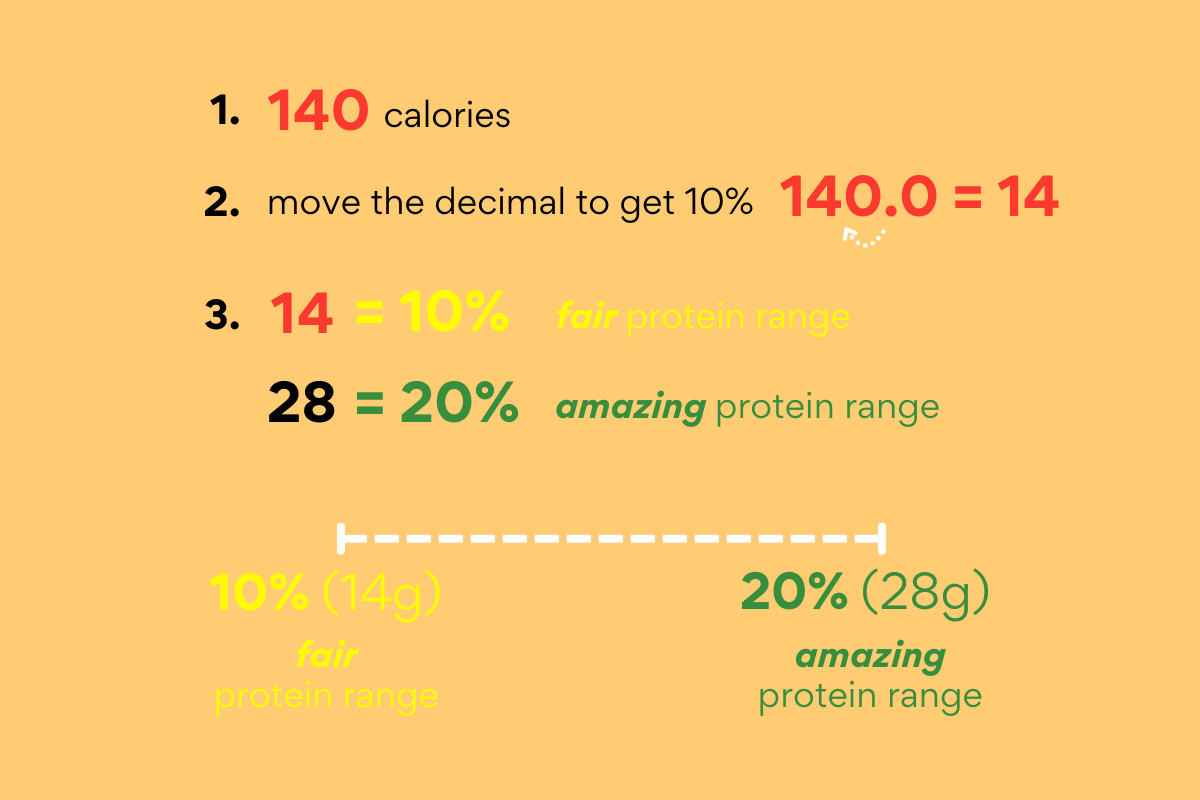
– 02 –
10-20 scale
Calculate 10% and 20% of the calorie number
If math is intimidating:
- move the decimal place over to the left by 1, that's 10%.
- multiply that number by 2, that's 20%.
In our example of 140 calories, this is 14 and 28.
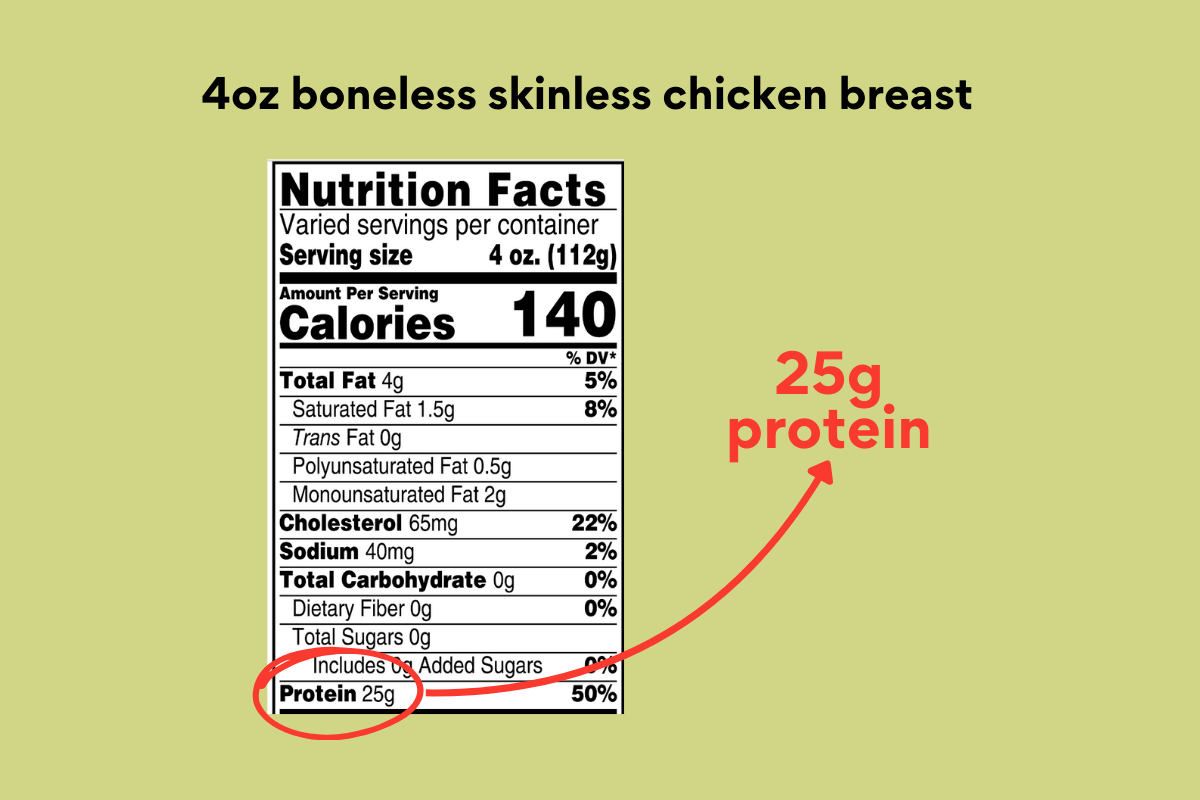
– 03 –
grams of protein
Note the grams of protein in the same nutrition facts panel
In our example of 4oz boneless skinless chicken breast, this is 25g of protein
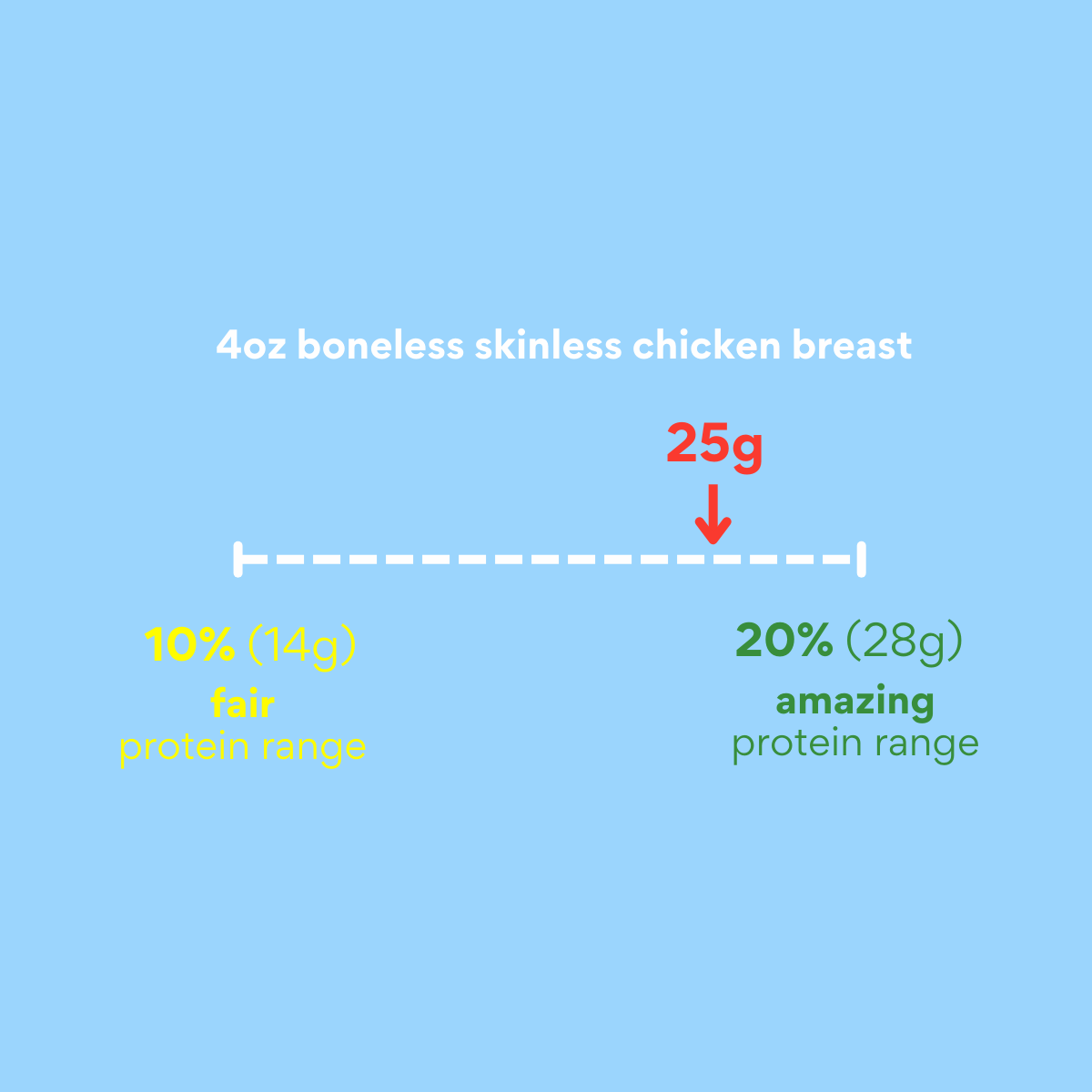
– 04 –
protein + 10-20 scale
Compare the protein to the previously calculated 10%-20%
The closer the grams of protein are to the 20% range, the better the source of protein the food is. If the food is well below 10%, I don't consider this a strong source of protein, even if it's advertised as high protein.
In our example the 10-20% range was 14 to 28. the grams of protein are 25, which is relatively high close to 28, making this food something I would consider high in protein.

– 05 –
bonus alternative
Divide protein by calories
Use your phone and divide the grams of protein by the calories. This gives you the same result as the above steps but with a more precise % number.
note: Using your phone might seem quicker, but when walking around the grocery store it's faster to mental math an approximation.
remember: You only need an approximation to get a sense of how good (or bad) the protein to calorie ratio is. This isn't a substitution for journaling the protein and calories you end up consuming.
now you can compare foods relative to their calories
why measure like this?
Because we eat protein with other food groups
We're eating our chicken with a side of rice, not a side of salmon.
Carbs and fats aren't evil; we need them for their healthy macro and micronutrients. Plus, they make up a majority of our caloric intake. Choosing high protein foods helps us have a better chance of achieving our protein goals for the day!
written by: tom, co-founder of momo®
more information
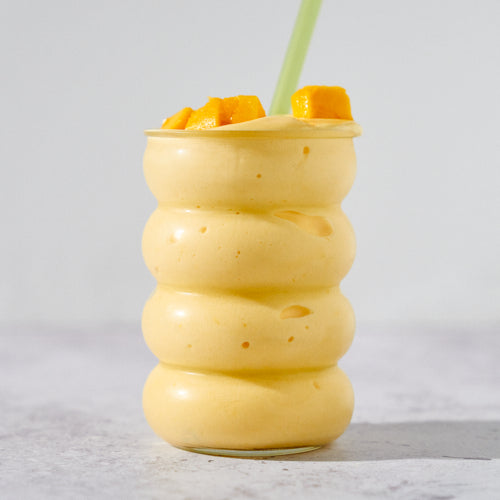
30g Protein Mango Lassi Smoothie
Refreshing for the summer time in either smoothie or Creami form!
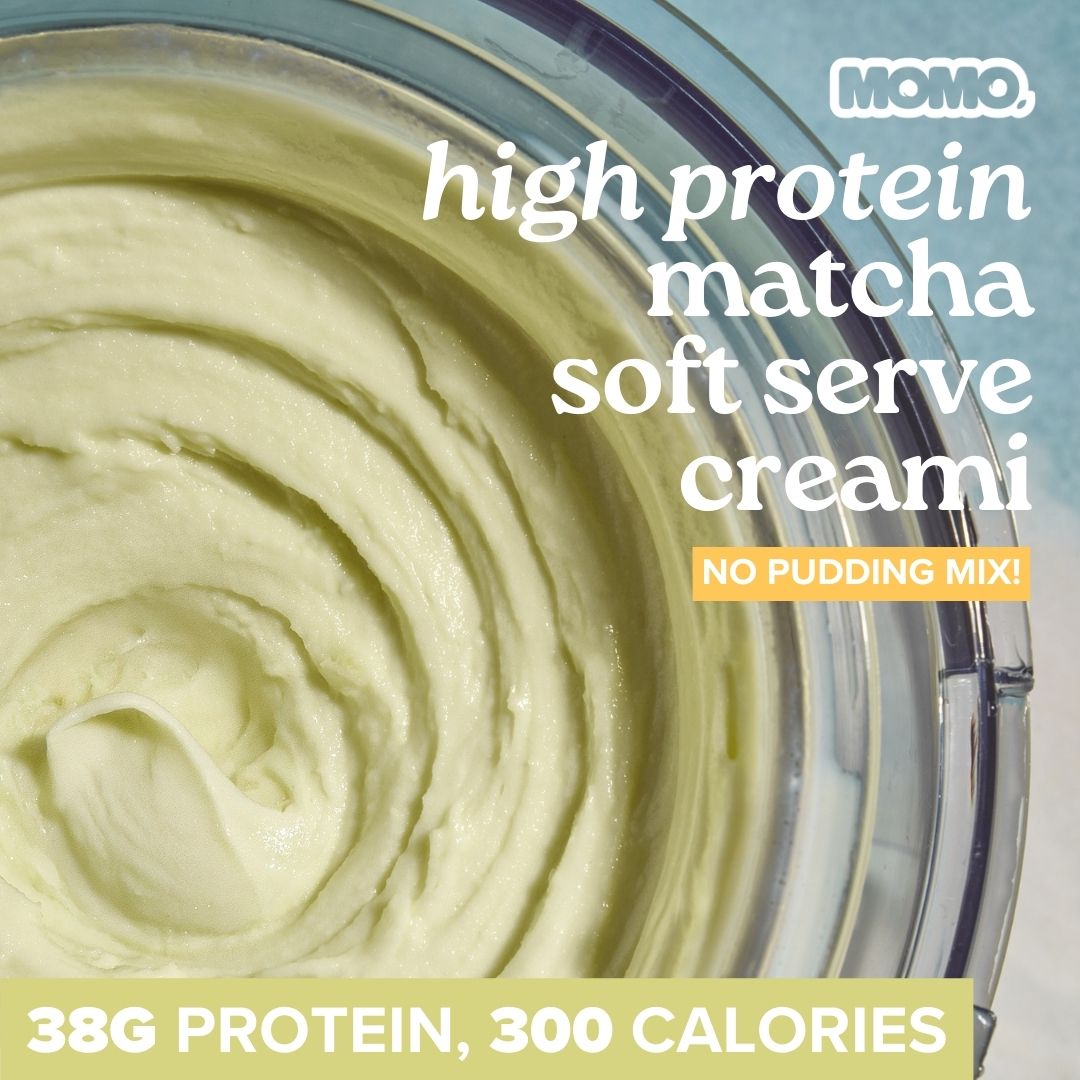
High Protein Matcha Soft Serve Creami
How to make one of our favorite high protein snacks: Matcha Soft Serve creami (38 grams protein and 300 calories)!
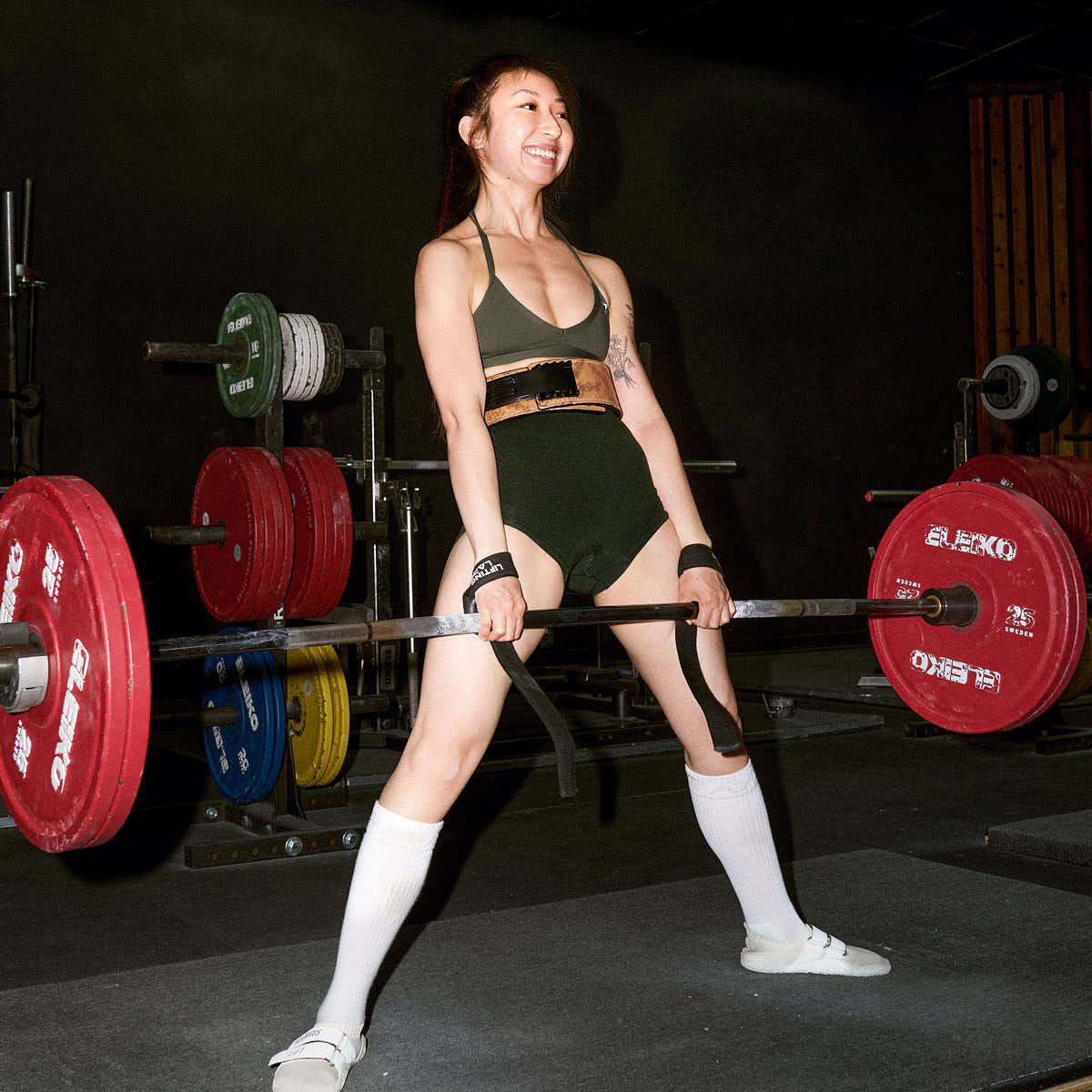
Can Pre-Workout Help Me Build Muscle?
Can pre-workout help me build muscle or is it just for energy?

